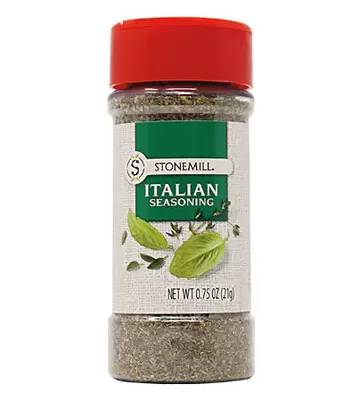Food Nutrition Facts
Nutrition Facts For
Italian Seasoning
Portion Size: 1 Tablespoon
| Nutrient | Value | % Daily Value* |
|---|---|---|
| 15.0 kcal | 1% | |
| 0.0 g | 0% | |
| 0.0 g | 0% | |
| 0.0 mg | 0% | |
| 2.0 mg | 0% | |
| 84.0 mg | 3% | |
| 3.0 g | ||
| 2.0 g | ||
| 0.0 g | ||
| 1.0 g | ||
| 0.0 g | ||
*Daily value based on a 2,000 calorie diet. Your daily values may be higher or lower depending on your calorie needs and health goals.
Calculate your daily calorie needs here
Nutrition Facts For 1 Tablespoon of Italian Seasoning

Italian seasoning is a pre-mixed blend of dried herbs commonly used in Italian-American cuisine. It typically includes a combination of basil, oregano, rosemary, thyme, and marjoram, although variations may exist and sometimes include savory, parsley, or even a hint of red pepper flakes for a touch of heat. This convenient mix provides a balanced and aromatic foundation for many Italian dishes, eliminating the need to measure out individual herbs. Its versatility makes it a pantry staple for adding a quick and easy burst of Mediterranean flavor to a wide range of recipes.
The appeal of Italian seasoning lies in its ability to simplify the process of flavoring dishes with the classic tastes of Italy. It's a time-saver for busy cooks, offering a consistent and harmonious blend of herbs in one convenient jar. From pasta sauces and pizza toppings to roasted vegetables and meat rubs, Italian seasoning can be incorporated into countless savory preparations. Its warm, herbaceous notes complement a variety of ingredients, making it a valuable addition to any kitchen.







